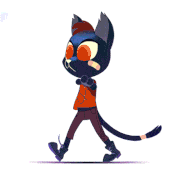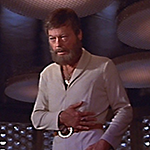|
So I've recently started trying my hand at creating PDF files so I can publish properly-formatted splat content for tabletop games. I've been using Adobe InDesign and pre-created templates, and while I can generally get around in the program, I don't understand any of the advanced functions. I've tried looking online for tutorials but they don't seem to directly address the issues I'm having. It's entirely possible I'm just searching for the wrong terms. One of the biggest issues I have currently is the inability to properly import art assets. The template I'm using has its own icons and borders and all manners of fancy touches that make the book look more professional, but whenever I import anything it seems to immediately suffer from a loss of fidelity, especially when resized. It's obvious there are ways to create art assets that are as clear as the fonts, but the process entirely escapes me. Here's what the icon in the thing I'm editing looks like:  And here's what my icon looks like once resized:  Which is an import of this:  Now I suspect I'm merely failing to convert the placed PNG file to some format that would retain its fidelity when resized. But I can't seem to find any information on the step I'm missing.
|
|
|
|
|

|
| # ? Apr 18, 2024 17:28 |
Swear this isn't a bump, I've done some more googling and have been told that the image PPI might be at fault, so here is that information.
|
|
|
|
|
I havent messed with indesign much but have you tried converting your graphic to vector? raster graphics usually only behave well in Photoshop compared to the other programs in CS
|
|
|
Killer Low Life posted:I havent messed with indesign much but have you tried converting your graphic to vector? raster graphics usually only behave well in Photoshop compared to the other programs in CS Is there a function that does this in either program or am I going to have to do it manually/pay Vectormagic.com an exorbitant fee?
|
|
|
|
|
Illustrator should be able to auto-trace that PNG file pretty easily. But really whomever designed the icon needs to give you the original. Failing that, learn how to draw a bezier curve and you could re-create it in a few minutes.
|
|
|
~Coxy posted:Illustrator should be able to auto-trace that PNG file pretty easily. The original PSD file, you mean?
|
|
|
|
|
It might be described as a vector within the .PSD file. Forgive me if this is being patronising, but super-simplistically: Raster: pixels in a grid that have a colour Vector: Instructions for how to draw lines and curves You can make a vector as big or as small as you like. A Photoshop file can have tonnes of stuff in it, multiple layers of raster images, text, vectors. So just knowing the file format doesn't let us know for sure.
|
|
|
~Coxy posted:It might be described as a vector within the .PSD file. All right, I'm talking to my artist about it, hopefully I can get this done.
|
|
|
|
Yayyy! That's from the exported PDF. That's smoother than butter. Now I understand how this works, sort of! I'll still leave this thread open for the inevitable moment when I can't figure something else out. Thanks for the help.
|
|
|
|
|

|
| # ? Apr 18, 2024 17:28 |
|
Lots of ID experience here, so ask away. I suspect that what you're running into is the fact that ID displays a low-res copy of imported raster art for speed's sake, then uses the actual high-res art for PDF export. You can either right-click the object -> Display Performance -> High-Quality Display for a single object, or go to View -> Display Performance -> High-Quality Display for the whole document, but both options come with a significant speed penalty. The correct answer is to just trust ID, it knows what it is doing. That being said, if your artist is using a vector program, have him supply either EPS or AI files (depending on whether or not he's using Illustrator), instead of exporting them as raster graphics on his end. That'll simplify everything (and, with art that simple, shrink the final PDF file size considerably!). Quick question, are you intending to print this professionally, and do you know what your printers' press settings are? No plat so you can't PM me, but I'll keep an eye on the thread for any more questions. rndmnmbr fucked around with this message at 06:40 on Feb 15, 2018 |
|
|









